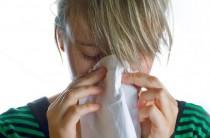Today, the number of people suffering from allergies is simply appalling. According to the data provided by medical statistics, 20% of the world's population at least once in their lifetime have encountered and know what bouts of allergic reactions are. A modern person suffers from various household and man-made factors that provoke allergies (deterioration of the environment, the emergence of new drugs, a large number of synthetic additives, etc.).
Unfortunately, progress is happening, at the moment, only in terms of the emergence of new factors in the occurrence of allergic diseases. But the way to get rid of the cause of allergic diseases (not to be confused with allergens) has not yet been found. The treatment that is used to treat allergies affects only the symptoms of this disease.
Allergy is a disorder of the functioning of the immune system, which is expressed in hypersensitivity to environmental components that do not pose a threat to the human body. Allergy is called the disease of modern man and for good reason, because in the modern world it is many times more common than ever. There are two most relevant theories about this:
hygiene theory. In the presentation of this theory, the causes of allergies are explained by the increased level of hygiene in the conditions of modern civilization. Adherents of this theory believe that high sanitary standards also have a negative impact. It lies in the fact that the immune system does not receive sufficient stimulation, because most of the factors with which it is designed to fight are eliminated. This leads to disruption of its normal operation, which leads to the development of allergic diseases.
This theory is supported by a number of facts:
- Studies of the population of states in which an increase in GDP growth is also noted and an increase in the incidence of allergic disorders.
- There is a direct link between the use of hygiene products with antibacterial components and the occurrence of asthmatic manifestations.
- Third world immigrants in the first generation are less likely to suffer from allergic manifestations than immigrants in the third generation.
Technological theory. Adherents of this theory attribute the increase in the number of allergic diseases to the increased level of chemical and heavy industry in developed countries. This leads to the fact that the air is saturated with harmful waste that irritates the immune system.
However, it is worth noting that these are only theories. Until now, scientists cannot shed light on the question of why some people in these conditions become allergic, while others do not.
Varieties of allergies
Allergy is a general name for a group of symptoms that result from exposure to an allergen that has entered the patient's body. Allergies can be divided either by allergens (food, drug, pollen, etc.) or by symptoms (respiratory allergy, allergic bronchial asthma, diathesis, etc.). Different types of allergies also manifest themselves in different ways, for example, for pollen allergy, respiratory symptoms are the most characteristic, while skin manifestations are often found in food allergies.
Allergic dermatitis
Allergic dermatitis is a skin manifestation of allergic disorders, which are characterized by the following skin changes: the appearance of rashes of various shapes, blisters, the appearance of itching, burning and peeling of the skin, at the site of localization, redness and irritation. The skin at the sites of manifestation of dermatitis can be both dry and with the presence of a rash, in the form of small dots filled with liquid contents, which form a yellowish crust when combed.
Dermatitis is a delayed-type allergic reaction. It is characterized by the migration of a large number of lymphocytes to the site of localization of an allergic reaction, which causes the development of skin manifestations in allergies.
Skin manifestations of allergy can occur both as a result of direct contact of the skin with the allergenic component, and as a result of the allergen entering the gastrointestinal tract, with drug or food allergies. Most often, this disease occurs after the interaction of the skin with all kinds of chemical products that are present in cosmetics and hygiene products. The cause of allergic dermatitis can be both latex and other synthetic fabrics, and natural wool.
In the case of contact dermatitis, the localization of allergy symptoms is within the range of the provoking factor. If allergic dermatitis develops as part of a food or drug allergy, then it can manifest itself anywhere. Basically, these are the elbow and knee folds, the inguinal region, as well as the face.
Urticaria is an allergic skin disease that is characterized by the appearance of flat, inflammatory formations of a red or pink hue on the skin that appear in response to the contact of a sensitive immune system with an allergen. Basically, urticaria manifests itself with allergies to food, drugs, certain tissues, plant components, as well as insect bites.
Urticaria can also be a consequence of intestinal dysbacteriosis, as well as violations of the endocrine regulation of the body, as well as in some infectious diseases. A general blood test, with urticaria, diagnoses an increase in the level of eosinophils and platelets.
Also, urticaria can occur as a result of exposure to ultraviolet radiation, as well as intense solar radiation. In this case, an allergic reaction occurs to the metabolic products that are formed inside the skin cells, under the influence of these factors.
Urticaria can have both acute and chronic manifestations:
Acute urticaria is characterized by rapid development. The body of the patient is immediately covered with an extensive rounded rash. These rashes are characterized by elevated temperature, which can affect the state of the general body temperature, with extensive rashes, which are often found in this disease. Basically, acute urticaria passes as quickly as it arises, its rashes rapidly decrease in size in a few hours, and stay on the body for no more than two days.
The cause of acute urticaria is often drugs (antibiotics), as well as food (crustaceans).
Chronic urticaria
Skin manifestations in chronic urticaria are less intense than in the acute form. The course is more protracted, characterized by severe itching in the places of appearance. In chronic urticaria, there may also be an increase in temperature, as well as body aches.
allergic rhinitis
Symptoms of allergic rhinitis are manifestations of inflammation of the sinuses that occur as a result of exposure to an allergen. Allergic rhinitis causes dilation of the blood vessels of the nose, allergic rhinitis, as well as various irritations and disruption of the normal process of nasal breathing.
During attacks of allergic rhinitis, edema also appears on the face, during an attack, breathing is predominantly oral, due to nasal congestion, tears flow from the eyes. These symptoms cause significant discomfort to the patient, as a result of difficulty in breathing, headaches appear, as well as weakness caused by oxygen deficiency.
Allergic rhinitis manifests itself with a high degree of reactivity of the immune system, occurring almost instantly, after the allergen enters the body, by inhalation. Most often it occurs as part of an allergy to dust, animal dander, mold, and plant pollen.
The division of allergic rhinitis into permanent and seasonal is directly related to the nature of the allergen. With persistent allergic rhinitis, the patient is faced with allergic irritants that are in the air all year round. Seasonal rhinitis is represented by an allergy to various types of plant pollen.
Treatment of allergic rhinitis is carried out with the widespread use of drugs for local therapy: drops and sprays.
Severe course is an indication for the use of corticosteroids, including for systemic use. Air pollution, as well as poor ecology, increase the symptoms of allergic rhinitis, while cool sea air has a positive effect on the symptoms of the disease. In order to cleanse the sinuses of allergens, special solutions of sea water or home-made salt solutions are used. They allow you to clear the villi of the sinuses from the accumulation of allergens, due to which there is a decrease in allergy symptoms.
Allergic bronchial asthma
Allergic bronchial asthma occurs as a result of a certain reaction, from the respiratory tract, in an organism that is sensitive to respiratory allergens. This type of allergy develops in response to allergens entering through the respiratory tract. Basically, these allergens are: dust, flowering plants, mold fungi, secretions that are formed as a result of the vital activity of insects.
As a result of exposure to an allergen, a patient with allergic asthma develops bronchospasm, which makes it difficult to breathe and causes shortness of breath. Breathing due to the narrowing of the lumen of the bronchi resembles a whistle, pressure is felt in the chest area.
Patients with allergic asthma should avoid:
- smoke generated by smoking tobacco;
- perfumes, deodorants and other spray products;
- spray fertilizers;
- dry dusty or vice versa excessively cold air;
- smoke from the fire
Allergic conjunctivitis are symptoms characteristic of an ocular inflammatory process that develop as a result of an allergen entering a sensitized organism.
The symptoms of this allergic manifestation are as follows: dilation of the blood vessels of the eye, causing severe redness, swelling, itching, severe lacrimation, fear of light, pain in the eyes. Allergic conjunctivitis, with pollen allergy, is most often associated with rhinitis. The risk of allergic conjunctivitis is associated with a high degree of permeability of the mucous membrane of the eye.
Pseudoallergy
A pseudo-allergy or false allergy is a group of allergic symptoms that are not related to the immune system's response to an allergen. In the case of pseudo-allergy, there is an effect of certain chemicals on the hormone histamine, which causes allergy symptoms. This influence occurs through a number of other mechanisms that do not include stimulation of mast cells by the antigen-antibody complex.
So pseudo-allergy can be associated with eating cheese such as Roquefort, which contains a large amount of histamine. Once in the body, histamine begins to act on H1 receptors, which are located on skin cells, eyes, respiratory system, etc. For this reason, eating foods containing histamine (hard cheeses, chocolate, smoked meats) can trigger allergy symptoms, even in a healthy person. Pseudo-allergy can include a variety of symptoms of allergic reactions: skin rash, inflammation, manifestations of allergic rhinitis and conjunctivitis, asthmatic manifestations, etc.
What types of allergic reactions are there, in addition to the above? They are classified according to the nature of the allergens that cause them. In practice, this is also expressed in various symptoms. For example, food allergic reactions are mainly represented by skin manifestations, while an allergy to dust or plant pollen is manifested by symptoms of allergic rhinitis and conjunctivitis.
food allergy
This type of allergy is an intolerance of the body to certain food components that enter the bloodstream through the gastrointestinal tract. A significant part of allergic reactions to certain food components are not allergic, but pseudo-allergic mechanisms of occurrence. This is due to the content in various foods of components that activate the metabolism of histamine and other factors of allergic reactions.
Also, intolerance to certain nutritional components can develop as a result of diseases of the gastrointestinal tract, causing a violation of the intestinal microflora. With this exposure, unfriendly bacteria develop, the waste products of which cause allergic reactions.
Food allergies often occur in young children, at the age of six months - a year, as a result of a sharp introduction of natural products into the baby's diet. The transition to food from breastfeeding should be gradual. Even non-allergenic foods introduced at an adequate time should be given in small portions, since the baby must take some time to adapt.
Allergy to animal fur
These allergic reactions do not occur on the animal hair itself, but on those animal waste products that remain on its surface. By itself, the protein that makes up animal hair or bird feathers is not able to be absorbed by the body. When ingested, these substances cause the development of allergic symptoms, which are manifested by sneezing, inflammation and redness of the eyes, nasal congestion.
Allergy to plant pollen
This type of allergy is categorized as respiratory. This means that allergens spread through the air and enter the body, along with the respiratory tract. This type of allergy is characterized by seasonality of the disease. Flowering of plants occurs from mid-spring to September, inclusive. The main allergen is ragweed, the pollen of which is released in large quantities and is intensively carried with the air.
With pollen allergy, the method of immunotherapy is used with great efficiency. This is also convenient, since pollen allergy sufferers have a long remission period, during which immunotherapy measures can be carried out.















